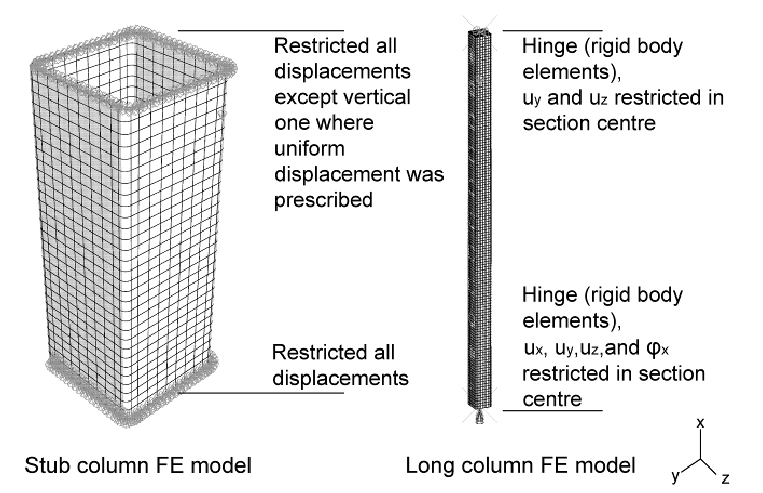Stub columns, also known as short or stocky columns, offer a range of benefits in engineering and construction projects. These columns have a relatively short height and a high ratio of width to height. Here, we explore the advantages of using stub columns in detail:
Enhanced Buckling Resistance:
One of the primary benefits of stub columns is their superior resistance to buckling. Buckling is a phenomenon where slender columns fail due to excessive compressive loads. The shorter height and robust design of stub columns make them less susceptible to buckling, ensuring better structural stability and safety. This characteristic is particularly valuable in structures exposed to heavy loads or external forces.
Improved Stability and Strength:
Stub columns excel in providing enhanced stability and strength under axial compression loads. Their compact design allows them to support considerable vertical loads without experiencing significant deformation or failure. This makes them ideal for use in buildings or structures that require robust load-bearing elements.
Space Efficiency:
In construction projects, efficient space utilization is often crucial. Stub columns, with their reduced height, occupy less vertical space compared to their taller, slender counterparts. This feature is particularly advantageous in high-rise buildings or structures with limited vertical clearance. By utilizing stub columns strategically, architects and engineers can optimize floor space and create more functional and usable areas.
Cost-Effectiveness:
Due to their compact design and reduced material requirements, stub column can be more cost-effective compared to taller columns. With less construction material needed, the overall cost of the project can be significantly reduced. Substantial cost savings can be attained in situations requiring a considerable number of columns, such as in warehouses or industrial facilities.
Design Flexibility:
The use of stub columns provides greater design flexibility to architects and engineers. By incorporating stub column into the building’s layout, designers can optimize the structural integrity and load-bearing capacity of the overall structure. This flexibility allows for more innovative and creative architectural designs.
Aesthetic Considerations:
Beyond their structural benefits, stub column can play a role in enhancing the aesthetics of a building. In architectural designs, stub column can be strategically placed to achieve specific visual effects or design preferences. Their shorter height can give buildings a more modern and sturdy appearance, aligning with contemporary architectural trends.
Reduced Swaying in Seismic Regions:
In earthquake-prone regions, stub column can offer advantages in terms of reducing lateral sway during seismic events. The compact and stocky nature of stub column contributes to improved seismic performance, making them an attractive choice for structures in areas with a high seismic risk.
Ease of Construction:
Constructing stub column is generally simpler and requires less formwork and reinforcement compared to taller, slender columns. This ease of construction can lead to faster building processes and cost savings during construction.
Retrofitting Existing Structures:
Stub columns can also be beneficial in retrofitting existing structures to enhance their load-bearing capacity or seismic resistance. In some cases, adding stub columns can be a cost-effective solution to strengthen the structure without significantly altering its appearance.
Sustainable Construction:
The material-saving aspect of stub columns aligns with sustainable construction practices. By minimizing the use of construction materials, the environmental impact of the project can be reduced, making stub column an eco-friendly choice for builders and developers.
Effective in Short Columns:
Stub column are particularly effective in situations where the required columns height is relatively short. Using slender columns in such cases would be inefficient and costly, making stub columns the preferred choice for shorter structural elements.
In conclusion
The benefits of using stub column in engineering and construction projects are numerous and significant. Their enhanced buckling resistance, improved stability and strength, space efficiency, cost-effectiveness, and design flexibility make them an attractive choice for various structures. Moreover, their contribution to seismic resilience, ease of construction, and potential for retrofitting existing buildings make them valuable elements in the field of structural engineering. Stub Column
Despite these advantages, it is essential to remember that the choice of column type, whether stub or slender, depends on the specific structural requirements, loads, and design considerations of the project. Experienced engineers and architects carefully evaluate these factors to ensure that the selected column type aligns with the overall structural integrity and safety of the building or structure.


